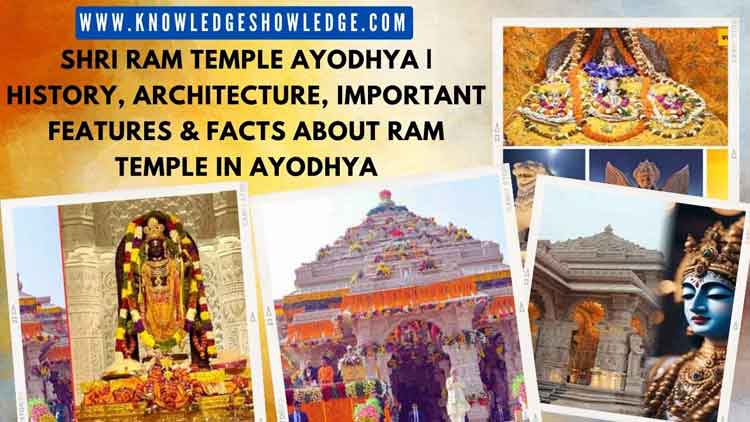Table of Contents
Introduction – Shri Ram Temple Ayodhya
The Ram Temple in Ayodhya is a Hindu religious site and a significant cultural and political symbol in India. The temple is dedicated to Lord Ram, a revered figure in Hinduism and the central character in the epic Ramayana. The controversy surrounding the site stems from the Babri Masjid, a mosque that was built in the 16th century by the Mughal Emperor Babur on the same location.
The dispute over the site led to decades of legal battles and communal tensions between Hindus and Muslims. In 1992, a large crowd of Hindu activists demolished the Babri Masjid, claiming that it was built upon the birthplace of Lord Ram. The event triggered widespread religious riots across India.
After years of legal proceedings, the Supreme Court of India, in a landmark decision in November 2019, granted the disputed site to Hindus for the construction of the Ram Temple. The court also ordered the allocation of an alternative piece of land to Muslims for the construction of a mosque.
The construction of the Ram Temple began in August 2020, with a ground-breaking ceremony attended by Prime Minister Narendra Modi. The temple is expected to become a major pilgrimage site for Hindus and holds immense cultural and religious significance in the country. The resolution of the Ayodhya dispute represents a complex intersection of religious, historical, and legal dimensions in India’s socio-political landscape.
Also Read: Family Tree of Great Lord Rama | Ancestors or Descendants
History of Ram Temple Ayodhya
The history of the Ram Temple in Ayodhya is deeply intertwined with religious, historical, and political dimensions, spanning several centuries. A complex and contentious issue, it has been the subject of legal battles, social debates, and communal tensions. The following narrative aims to provide an overview of the historical context, key events, and the socio-political landscape surrounding the Ram Temple in Ayodhya.
Ancient and Medieval History:
1. Mythological Roots:
The history of Ayodhya and the Ram Temple finds its origins in Hindu mythology, particularly the epic Ramayana. The Ramayana states that King Dasharatha controlled the kingdom of Kosala, which included Ayodhya as its capital. The temple is believed to be the birthplace of Lord Rama, the seventh incarnation of Lord Vishnu.
2. Historical Accounts:
Historical accounts and travelogues from ancient and medieval times often mention Ayodhya as a significant pilgrimage site. Various rulers, including the Guptas and the Mughals, are known to have contributed to the city’s cultural and architectural heritage.
Mughal Era:
1. Babri Masjid Construction:
The Mughal Emperor Babur is said to have ordered the construction of the Babri Masjid in Ayodhya in the early 16th century. The mosque was built by his general Mir Baqi, and its construction marked a significant event in the architectural history of the Indian subcontinent.
Colonial Period:
1. British Rule:
During British rule, Ayodhya continued to be a place of religious significance for Hindus. The communal divide started becoming apparent, and the colonial administration attempted to manage religious sentiments, often resulting in disputes.
Post-Independence Period:
1. Post-Partition Tensions:
The partition of India in 1947 led to communal tensions and the displacement of populations. Ayodhya, like many other places, witnessed the repercussions of religious animosities.
2. Idols Placed Inside the Mosque:
In December 1949, idols of Lord Rama were placed inside the Babri Masjid. This event marked a turning point and led to legal disputes over the site.
Legal Disputes:
1. Title Suit Filed:
In 1950, a local resident filed a title suit claiming that the mosque was built on the site of an ancient temple. This initiated a series of legal battles over the ownership of the land.
2. Land Dispute Escalation:
Over the years, tensions escalated, and various parties claimed the right to the land. The Vishwa Hindu Parishad (VHP) and the Rashtriya Swayamsevak Sangh (RSS) became active in the movement for the construction of a Ram Temple at the disputed site.
3. 1986: Babri Masjid Demolition Order:
In 1986, the Faizabad district court ordered the opening of the locks on the Babri Masjid premises, allowing Hindus to worship inside. This decision further heightened communal tensions.
4. 1992: Babri Masjid Demolition:
On December 6, 1992, a large mob of kar sevaks (religious volunteers) demolished the Babri Masjid. The event triggered widespread riots and violence across India.
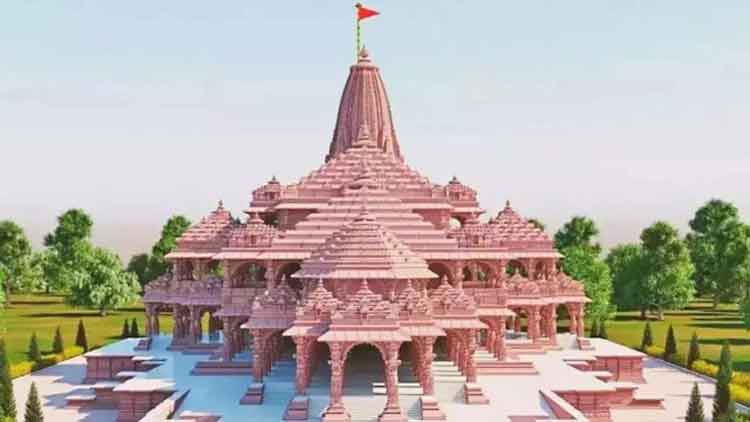
Aftermath:
1. Riots and Communal Tensions:
The demolition of the Babri Masjid resulted in widespread communal violence, leading to loss of life and property. The event deeply polarized Indian society along religious lines.
2. Legal Proceedings:
Various legal battles ensued, and the government established the Liberhan Commission to investigate the events leading to the demolition.
3. Land Dispute Resolution:
In 2010, the Allahabad High Court delivered its verdict, dividing the disputed land among the Sunni Waqf Board, the Nirmohi Akhara, and the party representing the deity Ram Lalla.
4. Supreme Court Verdict (2019):
The Supreme Court of India, in a landmark judgment in November 2019, awarded the entire disputed land to the Hindus for the construction of the Ram Temple. It also directed the government to allocate an alternative site to the Sunni Waqf Board for the construction of a mosque.
Construction of the Ram Temple:
1. Bhoomi Pujan (2020):
On August 5, 2020, the foundation stone for the Ram Temple was laid in a grand ceremony attended by prominent political figures and religious leaders.
2. Construction Progress:
Since the ground-breaking ceremony, construction work on the Ram Temple has been progressing. The temple is envisioned to be a symbol of cultural and religious pride for many Hindus.
Contemporary Relevance:
1. Social and Political Impact:
The history of the Ram Temple in Ayodhya has had far-reaching social and political implications, influencing electoral politics and shaping public discourse.
2. Communal Harmony Challenges:
While the construction of the Ram Temple is celebrated by many, it remains a source of tension for some communities. The challenge lies in fostering communal harmony and addressing the concerns of all sections of society.
In conclusion, the history of the Ram Temple in Ayodhya reflects the complex interplay of religious beliefs, historical narratives, and political considerations. The journey from the mythological roots to the contemporary construction of the temple is marked by legal battles, communal tensions, and efforts to find a delicate balance between competing interests. The impact of these events extends beyond the religious sphere, shaping the socio-political landscape of modern India.
Also Read: [ Ek Shloki Ramayan With meaning & Rule ] Great Ramayan in One Shloka | एक श्लोकी रामायण अर्थ सहित
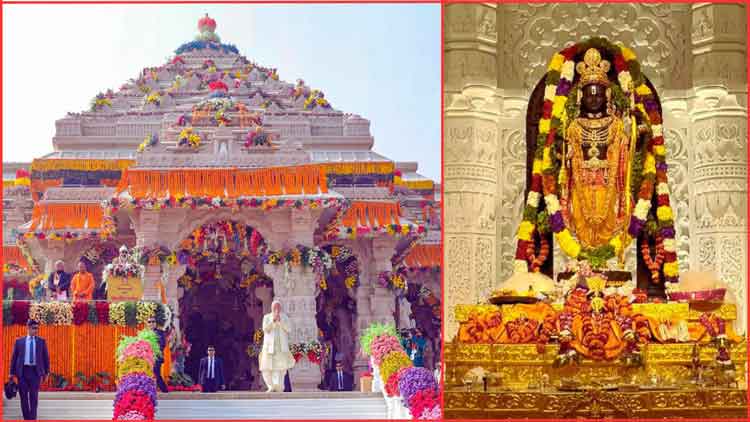
Facts About Ram Temple Ayodhya
As of my last knowledge update in January 2022, here are some facts about the Ram Temple in Ayodhya:
Historical Background:
The Ram Janmabhoomi-Babri Masjid dispute was a longstanding legal and political issue in India.
The Babri Masjid, which stood in Ayodhya, Uttar Pradesh, was demolished in 1992 by a group of activists who believed it was built on the birthplace of Lord Rama.
Land Dispute and Legal Battle:
The disputed land was claimed by both Hindus and Muslims, with Hindus asserting that it was the birthplace of Lord Rama.
The legal battle over the site lasted for several decades, involving various court cases and judgments.
Supreme Court Verdict:
In November 2019, the Supreme Court of India delivered a landmark judgment in the case, stating that the disputed land would be handed over to a trust to build the Ram Temple.
The government was also ordered by the court to offer a different location for the mosque’s construction.
Formation of Trust:
Following the Supreme Court verdict, the Shri Ram Janmabhoomi Teerth Kshetra Trust was formed to oversee the construction of the Ram Temple.
Bhoomi Pujan and Construction:
The groundbreaking ceremony (Bhoomi Pujan) for the construction of the Ram Temple took place on August 5, 2020, and was attended by various dignitaries, including Prime Minister Narendra Modi.
The temple’s design is based on the ancient architectural principles of temple construction in India.
Architecture and Design:
The proposed design for the Ram Temple incorporates traditional Indian temple architecture, particularly the Nagara style.
It is expected to be a grand structure with multiple domes and intricate carvings.
Timeline and Completion:
The construction of the Ram Temple is expected to take several years, and the completion timeline may be subject to various factors, including funding and construction progress.
Please note that developments may have occurred since my last update in January 2022. It’s advisable to check the latest news sources for the most recent information regarding the Ram Temple in Ayodhya.
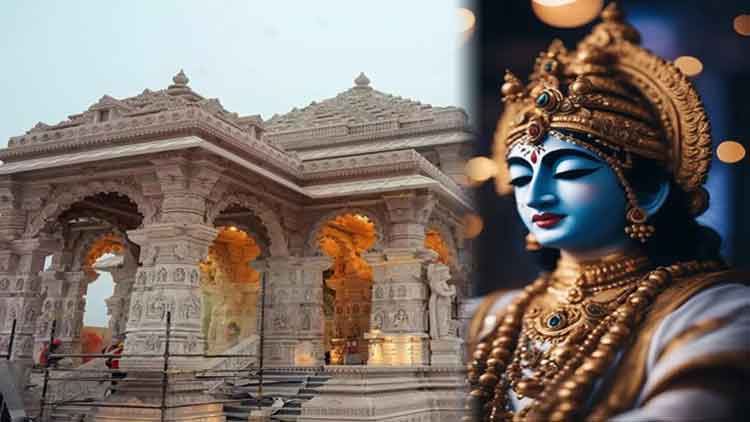
Important Features of Ram Temple Ayodhya
The Ram temple being built in Ayodhya is going to be the most special in the world, the glimpse of which will be visible from the sanctum sanctorum of Shri Ram Lala to the pillars in the temple.
Ayodhya’s Ram temple will be equipped with city style and many features. The Ram temple in Ayodhya is now under construction, and preparations for the dedication of Ram Lalla are well underway. The date of this unique programme is January 22. Following this, special events will be held in Ayodhya for two months, ending on March 25. Special Ramlila, discourse, and Ram Katha programmes will be held at Ayodhya during this time which the Uttar Pradesh Department of Culture and Tourism is getting ready for.
Additionally, special arrangements are being made for the massive temple that Ramlala is building, which will have numerous attractions. Below mentioned are some of the special features of this special temple.
Features of Ram Temple Ayodhya
- The Ram temple is being constructed in the manner of a traditional city.
- The Ram temple will be 161 feet tall, 250 feet wide, and 380 feet long (east to west).
- The Ram temple will have three stories, with a 20-foot ceiling on each level. The temple will have 44 gates and 392 pillars in total.
- The court of Lord Ram will be located on the first level, and the infant form of Lord Shri Ram, the deity of Shri Ram Lalla Sarkar, would be housed in the main sanctum sanctorum.
- In addition, the temple will have five pavilions: the dancing pavilion, the colour pavilion, the assembly pavilion, the prayer pavilion, and the kirtan pavilion.
- Idols of gods, goddesses and goddesses are being carved on the pillars and walls of the Ram temple.
- If you enter the temple from the east, you will climb 32 stairs and come from Singhdwar.
- The temple will have a ramp and a lift available for the elderly and crippled.
- The temple will be surrounded by large walls, or rectangular ramparts. Its breadth is 14 feet, and its entire length in all four directions is 732 metres.
- On each of the four corners of these forts, four temples honouring the Sun God, Mother Bhagwati, Ganapati, and Lord Shiva would be constructed. The northern arm will house the Maa Annapurna temple, while the southern arm will house Hanuman ji’s temple.
- A historical Sitakoop will be built close to the temple.
- Additional temples honouring Maharishi Valmiki, Maharishi Vashishtha, Maharishi Vishwamitra, Maharishi Agastya, Nishadraj, Mata Shabari, and Rishipatni Devi Ahilya are planned for the complex.
- The ancient temple of Lord Shiva has been renovated on Navratna Kuber Tila in the south-western part where Jatayu idol has been installed.
- There isn’t any concrete on the ground at the temple because iron was not used in its construction.
- Under the temple, 14 metres of 14 mm thick Roller Compacted Concrete (RCC) has been installed. It now takes the shape of man-made rock.
- A granite plinth, standing 21 feet tall, has been constructed to shield the temple from ground moisture.
- Independent sewer treatment plant, water treatment plant, water system for firefighting and independent power station have been built in the temple complex, so that there is minimum dependence on external resources.
- A visitor convenience centre with a capacity of up to 25 thousand is being constructed in the Ram temple, where there will be lockers to keep the belongings of the visitors and medical facilities.
- The temple grounds will have amenities including restrooms, washbasins, open faucets, etc.
- The construction of the temple is being done completely according to Indian tradition and with indigenous technology. Additionally, the preservation of the environment and water resources is receiving significant emphasis. Due to which 70% of the total area of 70 acres will always remain green.
Also Read: Interesting Unknown Facts About Ramayana | Hidden Secrets and Fascinating Facts | Ramayana Mysteries
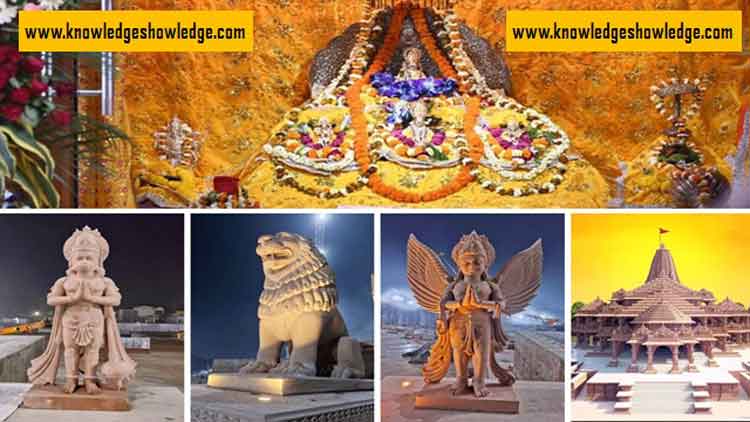
Largest Temple in India
The soon-to-be-inaugurated Ram Temple is set to become India’s largest temple based on its design structure. The Sompura family, responsible for the design of the temple, revealed that the architectural plans were conceived by Chandrakant Sompura’s son Ashish Sompura 30 years ago. According to the family, the temple will stand at a height of approximately 161 feet, covering a vast area of 28,000 square feet.
Sacred foundation: The foundation of the Ram temple has deep spiritual significance, as sacred soil from 2587 fields was brought to build it. Some notable places include Jhansi, Bithoori, Haldighati, Yamunotri, Chittorgarh, Golden Temple and many other holy places.
Architect: According to reports, he hails from the prestigious Sompura family, known for designing over 100 temples across the world, including the iconic Somnath temple. Led by chief architect Chandrakant Sompura and supported by his sons Ashish and Nikhil, they have created a legacy in temple architecture that transcends generations.
No use of iron or steel: According to many reports, the Ram temple is completely built with stones, and no steel or iron has been used in it.
‘Shri Ram’ Bricks: It is interesting to note that the bricks used in the construction of the Ram Temple bear the sacred inscription ‘Shri Ram’. This is an echo of an ancient practice during the construction of Ram Setu, which promises increased strength and durability for the modern iteration of these bricks.
Soil from Thailand: Soil from Thailand has been sent for the consecration ceremony of Ram Lalla on January 22, 2024, as a sign of international spiritual peace. This will reinforce the legacy of Lord Ram’s universal resonance beyond geographic bounds.
Special feature of the temple: Spread over three floors, spread over 2.7 acres, the ground floor depicts the life of Lord Ram, while the first floor will immerse visitors in the grandeur of Lord Ram’s court, carved from the pink sandstone Bansi Paharpur of Bharatpur, Rajasthan. Has been prepared. This temple is 360 feet long, 235 feet wide and reaches a height of 161 feet including the spire. With three floors and 12 gates, it is a majestic testament to the grandeur of architecture.
Contribution of holy rivers: The report said that the consecration ceremony of August 5 was done with the holy water of 150 rivers across India.
Time Capsule for Future Generations: The time capsule buried 2000 feet below the temple will include a copper plate inscribed with relevant information about the temple, Lord Ram and Ayodhya, which will preserve the identity of the temple for future generations.
Nagara style architecture: The temple consists of 360 pillars in the Nagara style, which adds to its visual appeal and makes it a masterpiece of architectural excellence.
Also Watch: Powerful Ram Mantra | Mantra to Get the Blessings of Lord Rama
Architecture of Ram Temple Ayodhya
The construction of the Ram Temple in Ayodhya was ongoing, and the detailed architectural plans may have evolved since then. As of that time, the proposed architectural plan was designed by the architect Chandrakant Sompura, who comes from a family of temple architects.
The basic architectural features of the Ram Temple in Ayodhya were expected to include:
Mandir Design: The temple design follows the Nagara style of temple architecture, which is traditional in northern India. It typically features a sanctum sanctorum (garbhagriha), a central hall (mandapa), and a tower (shikhara).
Material Used: The temple was planned to be constructed using mainly stones. The stones were carved with intricate designs and sculptures, depicting various scenes from the Ramayana and other aspects of Hindu mythology.
Central Dome: The temple was expected to have a prominent central dome or shikhara, which is a characteristic feature of Nagara-style architecture. This dome was anticipated to be a major architectural highlight of the temple.
Carvings and Sculptures: Elaborate carvings and sculptures depicting the life and events related to Lord Rama were planned to be incorporated into the temple’s design. The intricate detailing on the stones is a hallmark of traditional Indian temple architecture.
Ayodhya as a Pilgrimage Site: The overall plan considered Ayodhya as a pilgrimage site, and the temple was intended to be a significant religious and cultural center.
It’s essential to note that specific details may have changed or evolved since my last update, and it’s recommended to check the latest sources for the most accurate and current information on the architecture of the Ram Temple in Ayodhya. Additionally, the construction process may involve inputs and changes from various stakeholders and experts in temple architecture.
